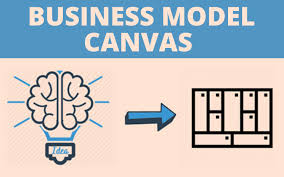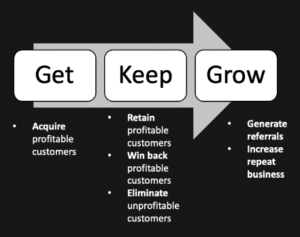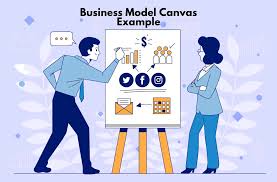How to Choose Right Channels in Business Model Canvas

Understanding Channels in Business Model Canvas
In the Business Model Canvas, the “Channels” component represents the different avenues through which a business connects with and engages its customers to deliver its value proposition. These channels encompass both distribution and communication methods that enable products or services to reach the target market. Channels can take various forms, including physical and digital channels. They are integral in shaping the overall business model.

Channels in Business Model Canvas
Here are some common examples of channels:
- Retail stores
- E-commerce websites
- Social media platforms
- Direct sales force
- Partner networks
- Mobile applications
Here are some additional examples of channels in the Business Model Canvas:
- Direct Sales: The business sells its products or services directly to customers through its own sales team or physical stores. For example, a luxury jewelry brand may operate high-end boutiques to sell its products directly to customers.
- Online Sales: Products or services are sold through an e-commerce website or mobile app. For instance, Amazon and eBay primarily operate through online sales channels.
- Retail Stores: Businesses may use physical retail stores, such as supermarkets, malls, or specialty shops, to sell their products directly to customers.
- Wholesale: Businesses may sell their products in bulk to other businesses (wholesalers or distributors), who then resell them to retailers or end consumers.
- Franchise: Franchise businesses utilize a network of franchisees who operate their outlets, using the parent company’s brand and business model. Examples include fast-food chains like McDonald’s and Subway.
- Marketplaces: These are platforms that connect buyers and sellers. Examples include Amazon Marketplace, eBay, and Etsy, where individual sellers list and sell products to a broader audience.
- App Stores: Mobile app stores like the Apple App Store and Google Play Store provide a platform for businesses to distribute and sell mobile applications directly to users.
- Agent/Broker: Intermediaries, such as real estate agents or insurance brokers, help connect buyers with sellers and facilitate transactions.
- Social Media: Social media platforms like Facebook and Instagram can serve as channels for businesses to reach customers, advertise products, and interact with their audience.
- Subscription Services: Businesses may use subscription models, such as streaming services like Netflix, to provide content or access to their products or services regularly.
- Content Marketing: Businesses create valuable content to attract and engage potential customers. This can include blogs, videos, and podcasts distributed through websites or social media.
- Events and Trade Shows: Participating in industry-specific events and trade shows can be an effective channel to showcase products, generate leads, and network with potential customers.
- Telecommunications: Businesses can use phone and email channels to communicate with customers, provide customer support, and even take orders.
- Third-Party Platforms: Businesses may leverage third-party platforms and marketplaces, such as Airbnb or Uber, to reach a wider audience without having to create their platform from scratch.
- Brick-and-Click: A combination of physical and digital channels, where customers can shop both in physical stores and online, with features like in-store pickup and online ordering.
Channels are positioned on the Value Creation side of the Business Model Canvas, following the selection of customer segment(s) and the development of a value proposition.
Importance of Channels in Business Model Canvas
Channels refer to the methods and platforms that a company utilizes to effectively connect with and engage its Customer Segments to deliver a Value Proposition. These channels encompass various forms of communication, distribution, and sales strategies that serve as the company’s interface with its customers. Channels are crucial touch points through which customers interact with the company, and they significantly contribute to shaping the overall customer experience. In the Business Model Canvas (BMC), Channels are positioned between the Value Propositions and Customer Segments, allowing for the alignment of specific values with the corresponding customer segments through suitable channels.
What are channels in business model canvas?

Channels in Business Model Canvas
Channels in business model canvas can be defined as pathways that facilitate the discovery of your product by customers and their engagement in the sales cycle. To determine the appropriate channels for your business, it is important to examine your buyer personas, understand your client’s behavior, and identify the channels that align with your target audience.
For example, if your product is aimed at teenagers, it would be wise to select Snapchat as your primary channel. Recent statistical research conducted by e-marketers indicates that Snapchat is the most popular social network among teenagers in the United States. Furthermore, it is projected to attract an additional 1.2 million users aged 12 to 17 within the next two years.
To determine the right channel for your business using the Business Model Canvas, consider the following questions:
- Who are your customers? What is their age, job description, and social status?
- Which media platforms do they use most frequently? What do research studies indicate?
- Where do they typically seek information?
- Which sources do they trust the most?
- What events do they attend?
- What opinion leaders or influencers do they follow?
By answering these questions, you can identify the channel that will provide the greatest value for your business.
Distribution Channels in the Business Model Canvas
Mastering the distribution channels building block is crucial for the success of a business. It allows organizations to effectively reach their target markets, deliver value to customers, and stay competitive in a dynamic business environment. Direct distribution channels involve selling products or services directly to customers without intermediaries, such as through a company’s website or retail stores. On the other hand, indirect distribution channels utilize intermediaries like retailers, wholesalers, or distributors to deliver products to end consumers.
The three methods for distribution channels include:
- Direct Selling: The company sells its products or services directly to consumers through its own sales team or website.
- Indirect Selling: The company utilizes intermediaries such as wholesalers, retailers, or distributors to reach the end customers.
- Hybrid Approach: The company combines both direct and indirect distribution methods to take advantage of the benefits offered by each approach.
A well-structured distribution strategy can drive market reach, customer experience, and business success.

Channels in Business Model Canvas
How to Choose the Right Channels in Business Model Canvas
The selection of channels depends on the business, target audience, and industry. Choosing the right channels is crucial for reaching and engaging customers, delivering value, and generating revenue. Businesses often employ multiple channels in a multi-channel strategy to maximize market reach and enhance the customer experience.
Value, Channel, User
Channels in business model canvas
- Customer segments prefer to be reached through channels that are convenient and aligned with their preferences. This may include channels such as email, social media, mobile apps, websites, physical stores, or phone calls.
- Channels are integrated to ensure consistency and coherence across different channels. This involves aligning messaging, branding, and customer experience across all channels to create a seamless and integrated customer journey.
- The most cost-efficient channels vary depending on the specific business and its target audience. It’s essential to analyze the cost and effectiveness of each channel to determine the most efficient ones. This can be done through metrics such as customer acquisition cost (CAC) and return on investment (ROI) analysis.
- Sales revenue through various channels directly impacts the company’s total revenue. Revenue generated from each channel contributes to the overall financial performance of the company. Monitoring and optimizing sales revenue from different channels can help drive overall growth and profitability.
- The resources used in particular channels, customer relationships, and revenue generation depend on the nature of the business. This can include physical assets like stores or warehouses, technology infrastructure, marketing materials, customer data, and human resources with specific skills and expertise.
- Key activities for channels, customer relationships, and revenue streams involve activities such as channel development and management, customer acquisition and retention strategies, marketing campaigns, sales processes, customer support, and revenue optimization efforts. These activities are aimed at effectively utilizing channels, nurturing customer relationships, and maximizing revenue generation.
- How Can SAP DMC Help Your Business: 5 Best Solutions
- The Power of Idea Innovation in Business!
- What is AOP Finance Meaning: Acronym Business| Benefits
- What is E-commerce Business Intelligence: 5 Top Tools for BI
- Digital Transformation in Business: Trend| Future| Benefits
- What is Business Process Transformation?
- Saas Company Examples: Everything You Need to Grow Your SaaS Business
- Types of Business Organizations | Private Limited Companies
- Business Planning Process and Types of Business Strategy
- 9 Best Free Funnel Builders for Affiliate Marketing: Boost Your Sale
- 5 Best Customer Relationship Business Model Canvas Examples
- How to Choose Best Channels in Business Model Canvas





